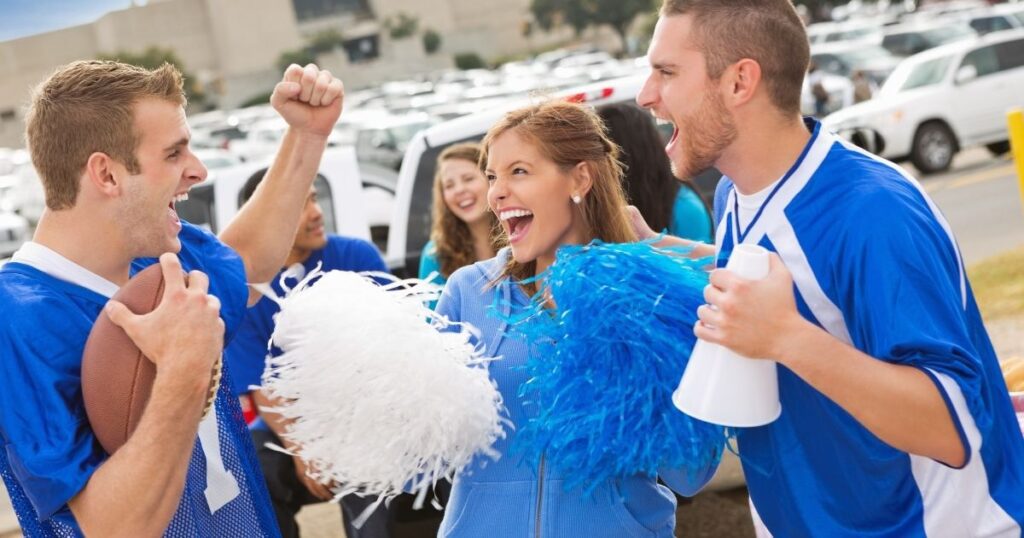From football bowl games to March Madness, collegiate sports captivate millions of passionate fans and athletes. The competitive college sports landscape comprises intense scouting systems, coveted athletic scholarships, packed stadiums, devoted student bodies, and multibillion-dollar media deals. Collegiate sports play an outsized role shaping American culture and entertainment.
A Recruiting Arms Race for Elite Talent
Aggressive recruiting is the lifeblood of major college sports departments. Coaches deploy national scouting networks to identify high school standouts years in advance using:
- Scouting databases profiling thousands of prospects with stats, rankings, and contact info
- Recruiting websites like Rivals.com and 247Sports that rank and analyze prospects
- AAU tournaments, sports camps, and combine events to assess talent in person
- Armies of graduate assistants who call and text recruits relentlessly
Once targets are identified, coaches bombard them with pitches conveying why their school is the perfect fit. Schools invest heavily in flashy facilities and amenities to woo prospects. Competition for five-star recruits is intense between arch-rival colleges. Signing day announcements have become major media productions. The highest profile recruits can literally change a school’s athletic fortunes overnight.

Lucrative Athletic Scholarships
The opportunity to earn an athletic scholarship is the holy grail for student athletes with college aspirations. These scholarships cover tuition, room and board, books, and more. While the NCAA limits schools to equating scholarships with cost of attendance, their value often exceeds $100,000. For students from disadvantaged backgrounds, athletic scholarships provide life-changing access to elite universities. This drives fierce competition for scholarship offers, which coaches dangle to attract talent. Critics argue colleges exploit athletes without commensurate compensation, fueling recent pay-for-play debates. But for now, a coveted scholarship remains the ticket to an athlete’s dream school.
The Road to a National Championship
For college athletes, the ultimate prize is contributing to a national title for their school. In football, teams compete in bowl games over winter break, culminating in the national championship game. March Madness sees 68 schools compete in an elimination NCAA basketball tournament. Schools like Alabama and UConn have become dynasties, winning multiple national titles in football and basketball respectively. The path requires first winning conference championships against arch rivals. Competition grows more heated each step. For schools that achieve national glory, the accompanying school pride and publicity are incalculable assets.
Impact on Student Life and Culture
Collegiate sports dominate campus life at major athletic schools. Cultish traditions surround gameday rituals, like tailgating at universities like LSU. Pep rallies energize students before big matchups. Many students select schools based primarily on their sports environment. Alumni organize around rooting for alma maters long after graduating. Iconic fight songs like Notre Dame’s “Victory March” strengthen bonds between past and current students. Even at academically focused schools like Stanford, athletics enhance campus vibrancy. For millions of fans, Saturdays are for college football.

Lucrative Media Rights Deals
Television networks and conferences sign ever-more-lucrative deals for media rights to air collegiate competitions. The SEC conference inked a $3 billion deal with ESPN. March Madness nets the NCAA $1.1 billion annually from CBS and Turner Sports. Media money has skyrocketed in recent decades, funding massive salaries for coaches like Nick Saban ($9+ million at Alabama). While media deals enrich athletic departments, critics contend universities exploit athletes by denying pay amid huge profits. But for now, college sports remain big business built on unpaid talent.
Iconic Programs and Figures
A few legendary athletic programs and figures have left indelible marks on college sports history:
- Alabama Football – Coach Nick Saban’s Crimson Tide are the most dominant college football program of the 21st century with 6 national titles. Their roster is an NFL pipeline.
- UCLA Basketball – Coached by the iconic John Wooden, UCLA won 10 NCAA basketball titles between 1964 and 1975, a dynasty never replicated.
- Notre Dame Football – With iconic helmets, the “Play Like a Champion Today” sign, and Touchdown Jesus mural, Notre Dame football personifies the grandeur of collegiate sports.
- The Stanford Band – Stanford’s irreverent, offbeat band encapsulates the quirky student spirit woven into college sports culture.
- The Duke-UNC Rivalry – Duke and UNC’s basketball rivalry matches hoops titans situated just miles apart. Their games decide bragging rights in basketball-crazed North Carolina.
Controversies: Amateurism and Pay
Despite college sports’ popularity, controversies persist around athlete compensation and alleged academic exploitation:
- Critics assert colleges reap billions while athletes risk injury playing full-time without pay, under the guise of amateurism.
- Recruiting scandals involving boosters or agents paying players under the table have arisen frequently.
- Graduation rates among athletes often lag far behind overall student bodies.
- Demands for reform have escalated to allow optional player endorsements or salaries.
While incremental changes have been enacted, true pay-for-play remains strongly opposed by the NCAA and most schools. The debate continues boiling intensely.

Conclusion
Love them or loathe them, collegiate sports undeniably captivate millions and help mold campus life. The complex ecosystem underpinning NCAA athletics continues evolving through pressures like pay-for-play debates and media deals. But one constant remains – come Saturdays in Fall, all eyes turn to the big college matchups.
Frequently Asked Questions About Collegiate Sports
Q: How do colleges scout and recruit top athletes?
A: Through scouting databases, prospect camps, recruiting sites, armies of assistants, and pitches conveying why their school is the perfect fit.
Q: What are the benefits of an athletic scholarship?
A: They’re worth up to $100k+ covering tuition, room/board, etc. They provide access to elite schools.
Q: How does college sports media money get distributed?
A: Media deals fund massive salaries for coaches and administrators. But athletes are not compensated directly.
Q: Why is paying college athletes controversial?
A: Opponents argue pay contradicts amateurism. Supporters say colleges exploit athletes without fair pay.
Q: How do colleges maximize sports’ impact on campus life?
A: Through gameday rituals, pep rallies, school pride symbols, alumni engagement, quirky traditions, etc.




